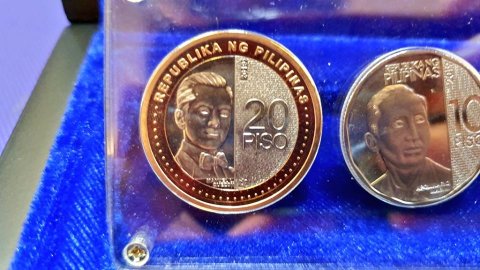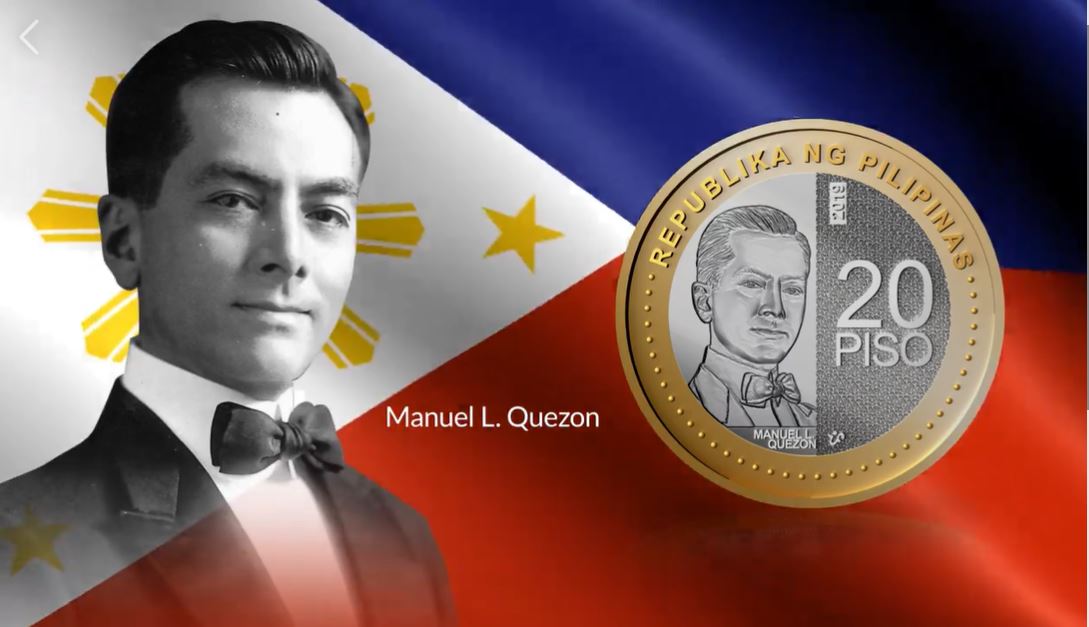New 20 Peso Coin
Published on January 7, 2020
LUCENA CITY, Quezon, Jan. 7 (PIA)- The Bangko Sentral ng Pilipinas (BSP) recently released the new 20-Peso and the enhanced 5-Peso coins which are the latest to be circulated under the BSP’s new generation currency (NGC) coin series.
According to BSP Lucena City, the use of the 20-Peso coin which is now the highest denomination in the NGC coin series launched in 2018-is more cost efficient to produce as it will have a longer circulation life than a 20 peso banknote.
Based on a study by the University of the Philippines, the 20-Peso banknote is the most-used denomination for payments across the country. As a result, it is easily rendered unfit for circulation and returned to the BSP for replacement.
The new ₱20 coin will have a gold-colored outer ring and a silver core and will also be the biggest in size. Metro Manila (CNN Philippines, December 17) — Pockets and wallets are bound to be. Answer 1 of 14: Here are photos of the new 20 peso coin.wonder how long it will take to ever get one of those in change!! Or go to the bank to buy one? Both the 20-piso banknote, first released in December, 2010, and the 20-piso coin are part of the New Generation Currency (NGC) series. The NGC coins were circulated only in 2018 with six denominations: the 10-piso, 5-piso, 1-piso, 25-sentimo, 5-sentimo and the 1-sentimo.
The design for the 20-peso coin is being finalized and its security features and specifications are now carefully being planned. According to BSP Assistant Governor Dahlia Luna, the coin version was considered after a study by the University of the Philippines found that Filipinos most frequently use P20 bills, leading to the banknote’s. Moved Permanently.
The new 20-Peso NGC coin shall co-exist as legal tender with the currently-circulating 20-Peso NGC banknote, which will be removed from circulation through natural attrition.
The new coin retains major elements of the 20-peso banknote. The coin’s front side features Manuel L. Quezon, the first president of the Philippine Commonwealth who advocated the adoption of the national language, created the National Economic Council, and worked ardently for Philippine Independence.
Its reverse side shows the BSP logo and the Malacañan Palace, the official residence of the Philippine president. Manuel L. Quezon was the first Philippine president to occupy it in his term.
Consistent with the NGC coin series which highlights native flora, the 20—peso coin showcases the Nilad, the plant from which the name of the country’s capital, Manila is believed to have originated, Likewise, the Nilad’s star-shaped flowers were said to be one once clustered in abundance along the banks of the Pasig River where the Malacañan Palace is situated.
The bi-color 20-peso NGC coin is easily distinguishable from other coins also highly secure, as it has microprints and an identifiable edge to deter counterfeiting.
The BSP also released the enhanced 5-peso NGC coin with nine sides to make it more distinct from other denominations in the NGC coin series.
The 5-peso coin also retains the design elements of the round NGC coin, with Andres Bonifacio, the father of the Katipunan, on the front side and the Tayabak plant, on the reverse. It also retains the security features of the round coin, including the microprints “Republika ng Pilipinas” and “Bangko Sentral ng Pilipinas”.
The design of the country’s newest coins was approved by the President of the Philippines. The BSP enjoins the public to properly use and recirculate Philippine coins for economic and cultural value. (Ruel Orinday- PIA-Quezon with reports from BSP- Lucena)
Metro Manila (CNN Philippines, October 14) — Consumers who are still confused with the all-silver coins released by the Bangko Sentral ng Pilipinas (BSP) will soon have a respite, with a distinct look for the five-peso denomination being planned.
In a statement, the central bank announced that it will be releasing an 'enhanced' version of the ₱5 coin, which will 'make it more distinct from other denominations.'
'The changes were based on studies on the design, security features, and specifications of the new coins,' the BSP said in a statement on Monday.
In March 2018, the central bank started releasing the New Generation Currency coin series which features an all-silver lineup for the 1-centavo, 5-centavo, 25-centavo, 1-peso, 5-peso, and 10-peso coins. What sets each coin apart is the hero on the face and the endemic plant or flower embossed on the reverse.

The silver ₱5 coin carries Andres Bonifacio, versus its golden predecessor which had the face of former President Emilio Aguinaldo.

The new nickel-plated steel coins are said to be more durable than the 1995 design, but are relatively smaller and lighter. Many Filipinos have complained about getting confused between the ₱1 and ₱5 coins. This forced the BSP to issue guidelines on how to set them apart by feeling the ridges of the one-peso and the smooth edges of the five-peso coin.
The BSP is yet to release photos of the new look of the ₱5 denomination.
READ: BSP to transfer money printing facility to Clark
Meanwhile, the central bank said it will launch the new ₱20 coin by December, ahead of its 2020 rollout. The BSP decided to shift the bill into a coin following a study conducted by the University of the Philippines showing that it is the most used denomination in the country, making it the fastest to be dirtied or ripped. The central bank said converting the ₱20 into a coin is 'most efficient' for currency production.
New 20 Peso Coin


'Once circulated, the new 20-Piso coin shall co-exist with the 20-Piso NGC banknotes as legal tender. The 20-Piso banknote shall be gradually removed from circulation through natural attrition,' the BSP said.
In July, BSP Governor Benjamin Diokno told CNN Philippines that Manuel Quezon, the second President of the Philippines, will remain as the face of the ₱20 coin version.
New 20 Peso Coin 2020 Philippines
Currently, the orange ₱20 bill is the lowest denomination among banknotes. The central bank previously converted the brown ₱10 bills into coins.